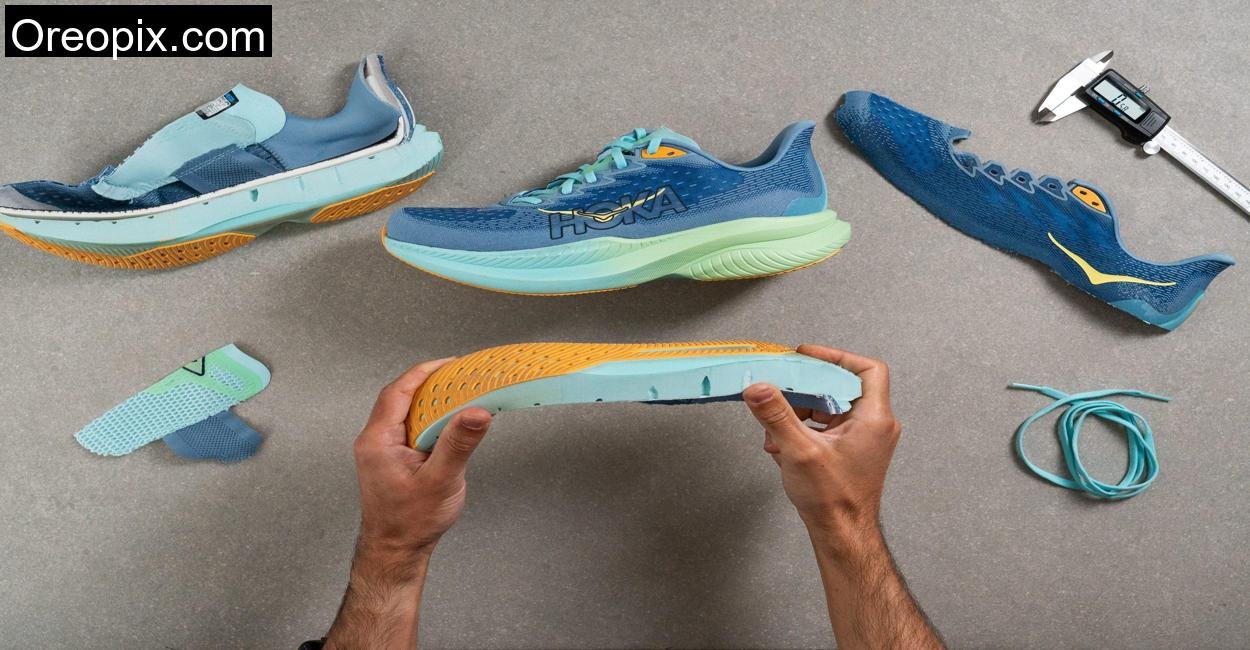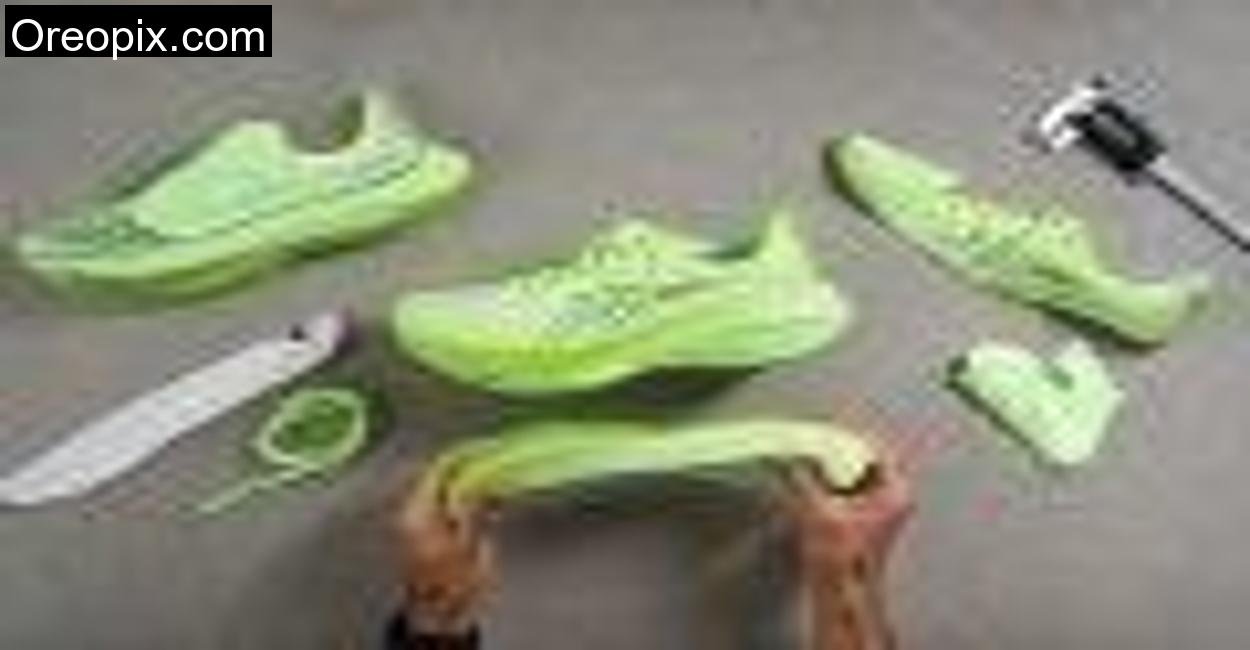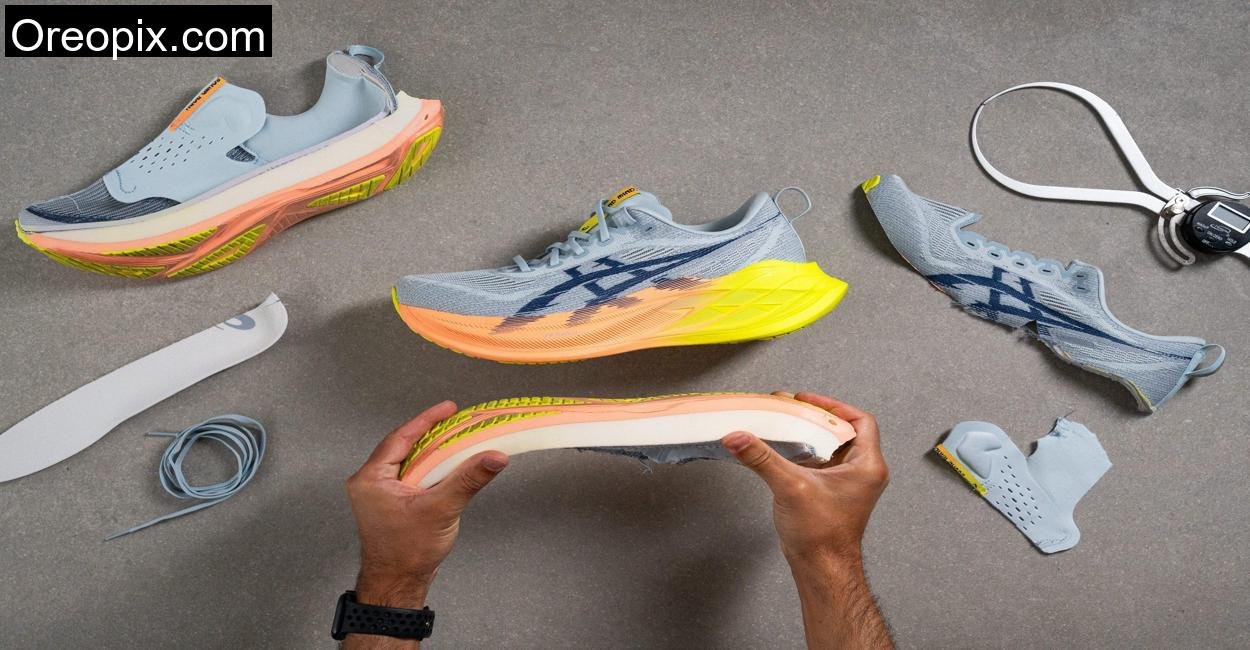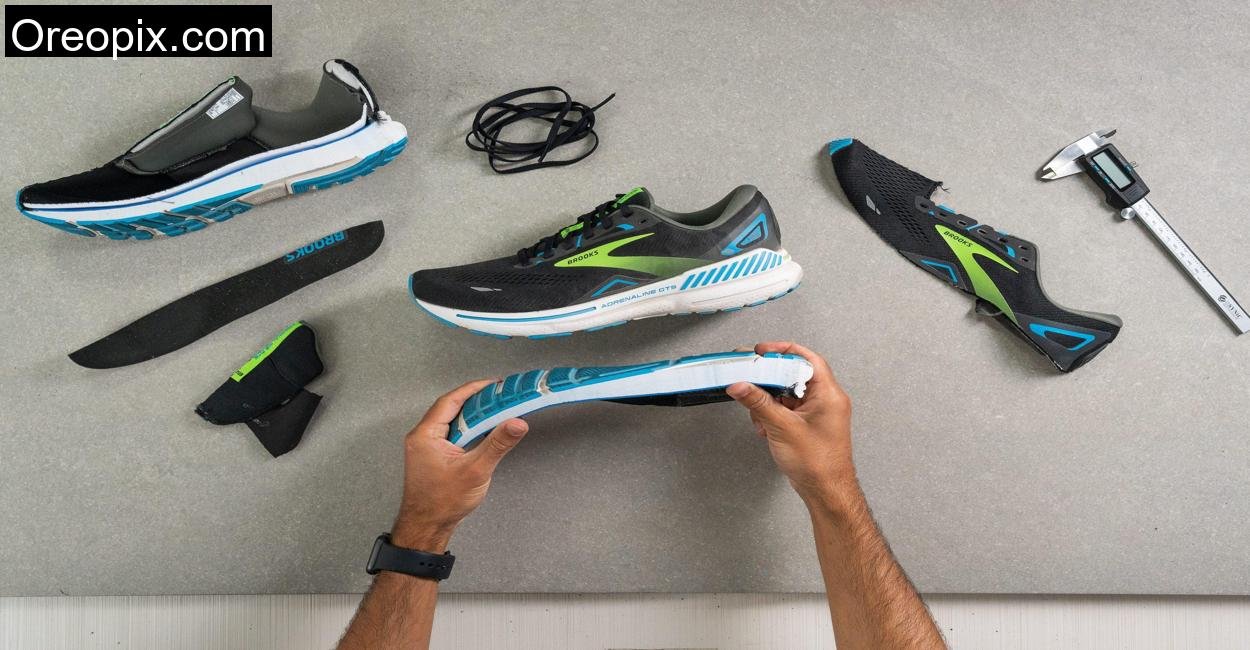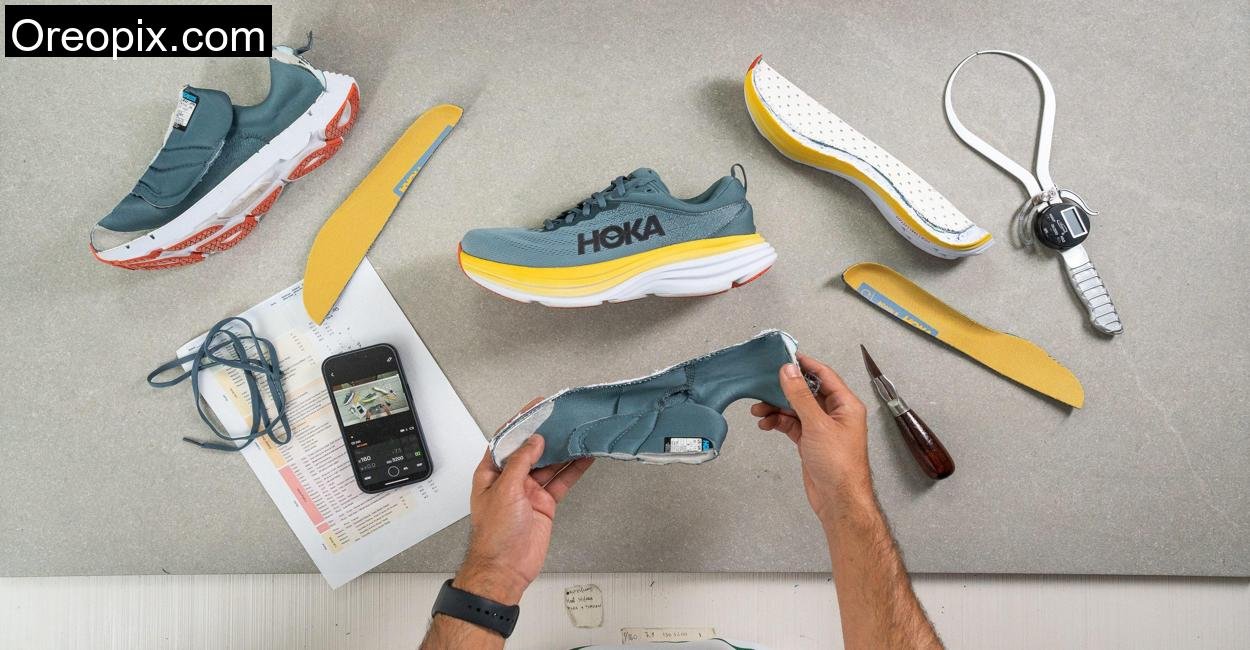Taramati Peak, the second highest summit in the Harishchandragad range of the Western Ghats, is not your typical testing ground for a road running shoe. But that’s exactly why I chose it. The idea was to push the HOKA Clifton 9 beyond its comfort zone, to see if the latest iteration of this cult-favorite daily trainer could handle a bit of unpredictability, much like our everyday training runs often do.
The Clifton 9 has built a reputation as a cushioned, neutral road runner, ideal for long miles and easy days. With a new ProFly+ midsole, slight weight reduction, and redesigned upper, this version promised a livelier ride. I didn’t want treadmill stats or smooth tarmac numbers. I wanted real-world performance under gritty conditions. And what better way to do that than a 10.5 km trek with steep inclines, loose gravel, and rocky crests?
Unboxing the Clifton 9
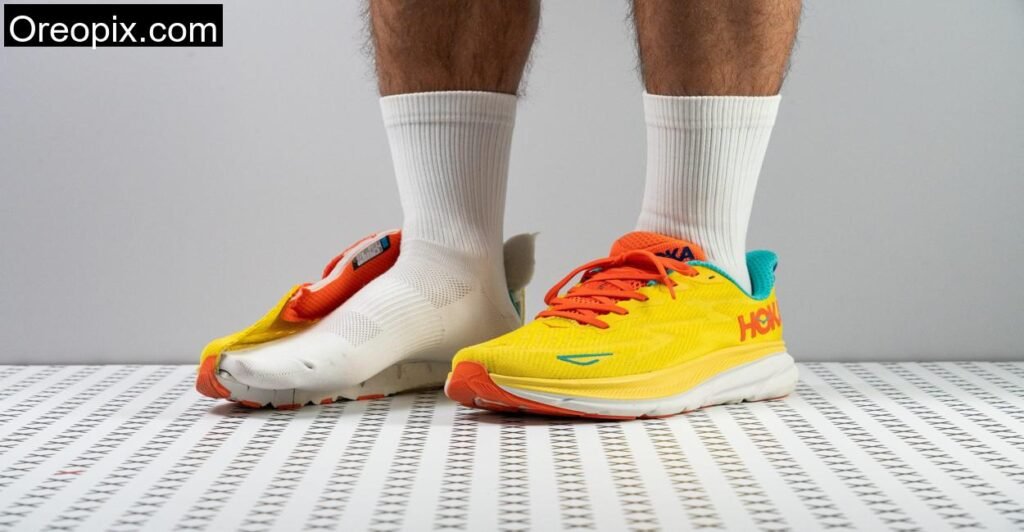
Straight out of the box, the Clifton 9 looks like an evolution rather than a revolution. HOKA kept the chunky midsole that the Clifton line is known for, but it somehow feels lighter in hand. The upper has a knit-like structure, softer than its predecessor, and the semi-gusseted tongue nestles nicely across the foot without feeling intrusive.
The moment I slipped them on, I noticed the classic HOKA heel cup, stiff, snug, and supportive. The shoe feels plush underfoot, with a high stack height that doesn’t sacrifice ground feel entirely.
The Climb Begins: Traction and Stability on the Trail
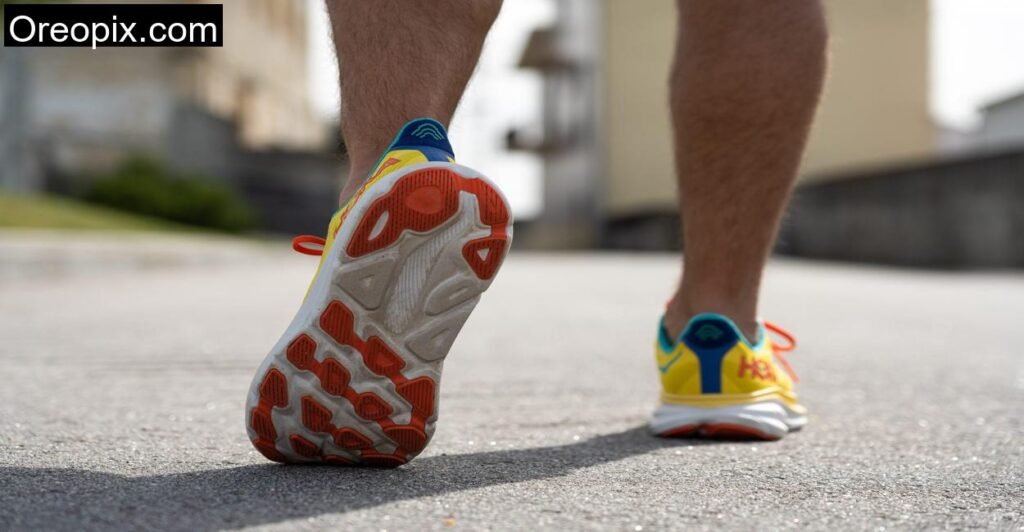
Taramati’s lower trail begins with a gradual ascent on packed dirt and scattered stones. The Clifton’s outsole, while designed more for road than trail, held up surprisingly well here. The rubber placement across high-impact zones gave me decent grip on dry surfaces. However, the moment I hit damp patches shaded by overhanging trees, I felt the limits of its 0.33 traction rating.
On slick rock slabs, I had to slow down and be deliberate with foot placement. The shoe isn’t made for technical terrain, but for a road shoe, it managed admirably, thanks in part to its wide midsole platform and stiff heel counter. The 96 mm heel width and 115 mm forefoot width provided unexpected lateral stability, especially when traversing narrow ledges.
Midsole Magic: ProFly+ Cushioning on Uneven Ground
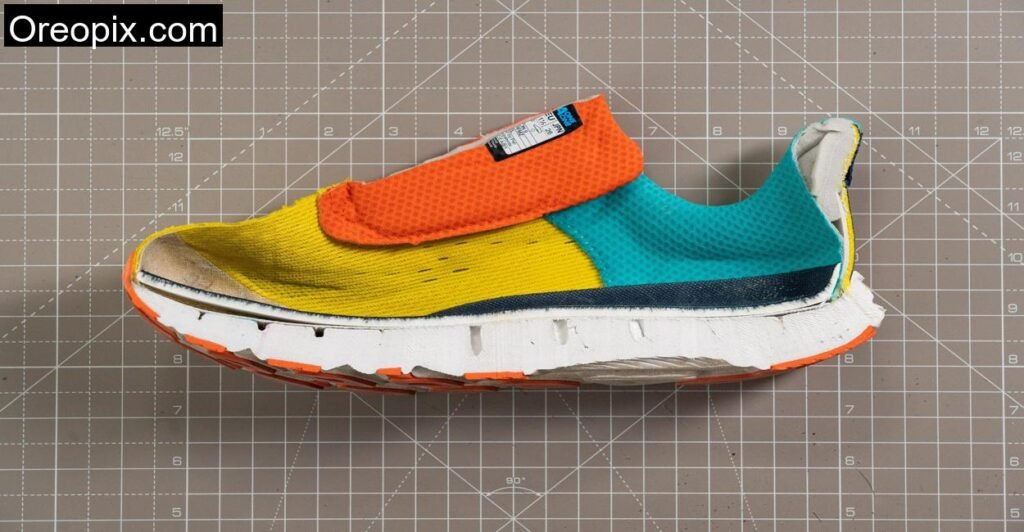
As the trail steepened, the Clifton 9’s ProFly+ midsole became my best friend. With a durometer reading of 20.4 HA, it’s 18% softer than the average running shoe. This plushness translated to exceptional shock absorption as I navigated uneven terrain.
I noticed the difference most while descending, the foam absorbed much of the impact, saving my knees and ankles from pounding. Even after 8 kilometers, there was no midsole collapse. The rocker geometry also helped roll my foot forward with minimal effort, reducing fatigue.
Even in colder sections of the shaded trail, where other foams tend to firm up, the Clifton 9 remained consistent. After 20 minutes of exposure to low temperatures (a simulation I tried pre-hike), the midsole only firmed up by 17.6%, well below the average of 28%.
Fit & Comfort: Breathability and Lockdown on the Move

The snugness of the upper became more apparent as I gained elevation. The toebox measures only 68.9 mm, narrower than average, and while I didn’t experience hotspots, I did wish for a bit more room for toe splay. If you have wide feet, definitely opt for the wide version.
The heel felt locked in place, thanks to the stiff counter (rated 5/5 in stiffness) and the curved collar that stayed off my Achilles. I didn’t have to stop once to readjust the laces, a testament to the semi-gusseted tongue that stayed put throughout the ascent.
However, breathability is where the Clifton 9 doesn’t quite shine. The mesh upper is dense, and despite visible perforations, ventilation is average. In the humid microclimates of the Western Ghats, my feet warmed up quickly, and I was grateful for the sockless-friendly interior.
Weight and Flexibility: Lighter Than It Looks
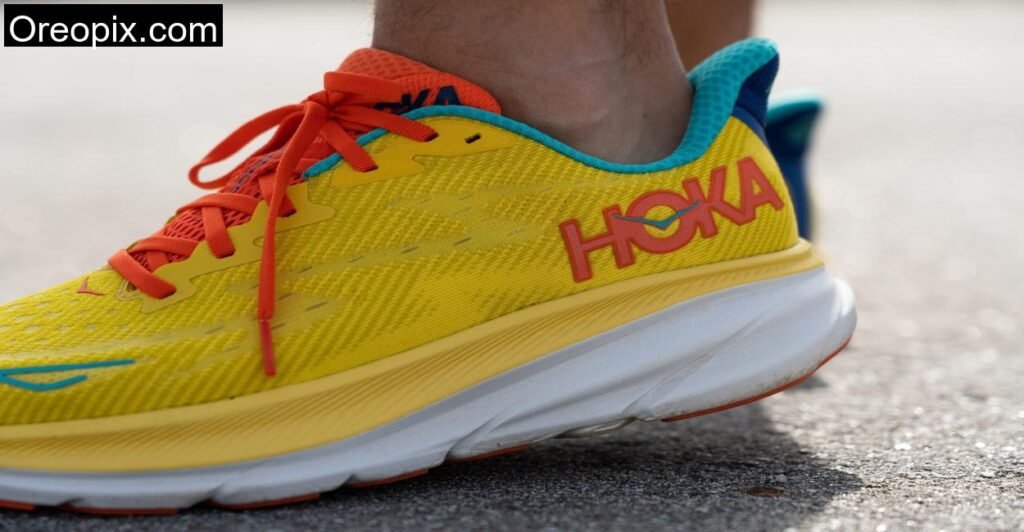
Despite the high stack (32.7 mm heel, 26.6 mm forefoot), the Clifton 9 only weighs 249g (8.8 oz), lighter than the average road shoe. This made a big difference on the trail. I didn’t feel bogged down, even while climbing steep switchbacks.
However, the shoe is stiffer than others in its category. It took 17.7N of force to bend it to a 30-degree angle, above the average of 14.9N. This stiffness helps in stability but doesn’t lend much in terms of agility. On technical sections, I had to rely more on my legs than the shoe’s flexibility.
Durability Check: Outsole and Upper After the Climb

Post-hike, I did a quick inspection. The outsole rubber had some superficial scuffing but no significant wear, the 3.7 mm thickness seems to be doing its job. The upper, though dusty, held up well with no fraying or loose threads.
The tongue padding (6.6 mm) and internal lining remained comfortable, even after over two hours on foot. HOKA’s attention to in-shoe comfort is evident, no blisters, no heel slip, and no arch fatigue.

Technical Specifications
Hoka’s official website is our go-to source for all technical information, making sure it’s always accurate.
| Feature | HOKA Clifton 9 |
|---|---|
| Weight | 249g / 8.8 oz |
| Drop | 6.1 mm |
| Heel Stack | 32.7 mm |
| Forefoot Stack | 26.6 mm |
| Midsole Softness | 20.4 HA |
| Breathability | 3/5 |
| Torsional Rigidity | 4/5 |
| Heel Counter Stiffness | 5/5 |
| Flexibility/Stiffness | 17.7N |
| Outsole Thickness | 3.7 mm |
| Toebox Width | 68.9 mm |
| Midsole Width (Forefoot) | 115.3 mm |
| Midsole Width (Heel) | 96 mm |
| Insole Thickness | 4.2 mm |
| Traction (Wet) | 0.33 |
Final Thoughts: From Road to Ridge
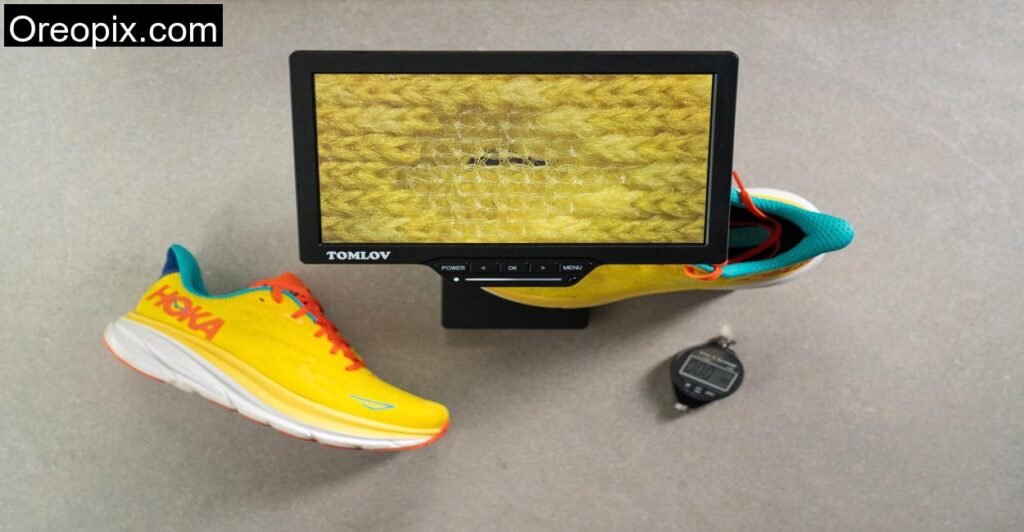
The HOKA Clifton 9 surprised me. It’s a road shoe that didn’t shy away from a mountain trail. While it’s not a substitute for a dedicated trail runner, its plush ride, stable platform, and lightweight design make it a versatile companion.
On Taramati Peak, it showed its strengths, comfort, cushioning, and surprising durability. Its weaknesses, breathability and wet traction, were manageable and didn’t overshadow the overall performance.
Would I wear it again for trail hikes? Probably not on technical terrain. But for mixed-surface runs, urban adventures, or long Sunday jogs where comfort is king? Absolutely. The Clifton 9 retains the soul of its predecessors while adding just enough spark to keep things interesting.
If you’re a runner who values cushioning, consistency, and quiet confidence, the Clifton 9 might just be your next mile-munching workhorse.
Is the HOKA Clifton 9 good for trail running?
While not designed for technical trails, it can handle light trails and fire roads. Just be cautious in wet or muddy conditions.
How does the Clifton 9 fit?
It runs true to size but has a narrow toebox. Wide versions are available.
Is it suitable for winter running?
Absolutely. The midsole maintains its softness in cold conditions better than most competitors.

